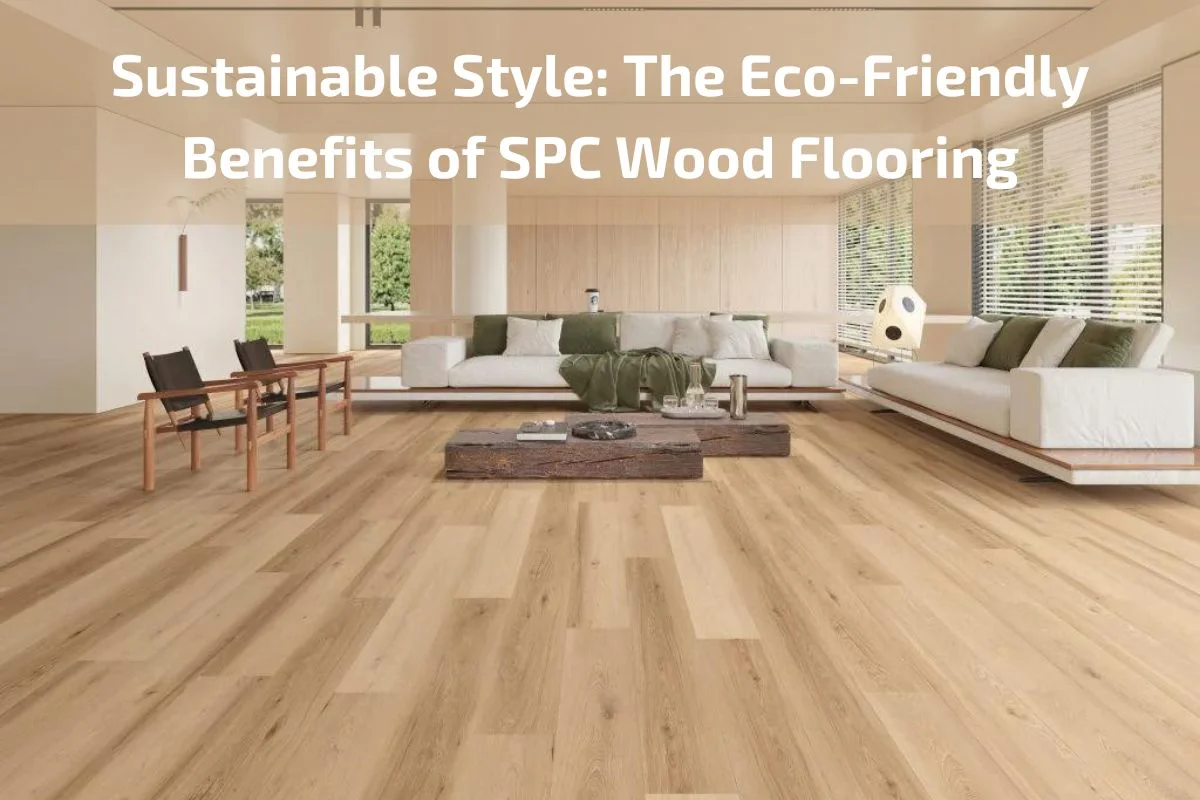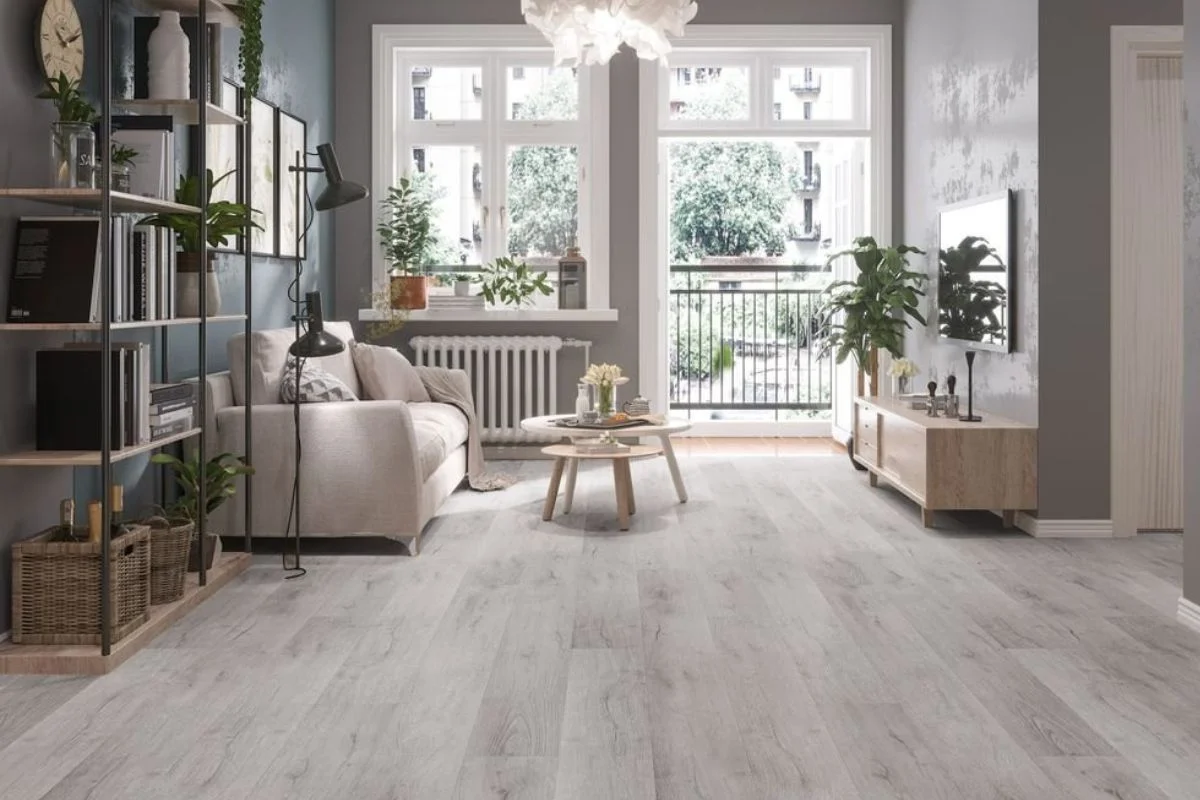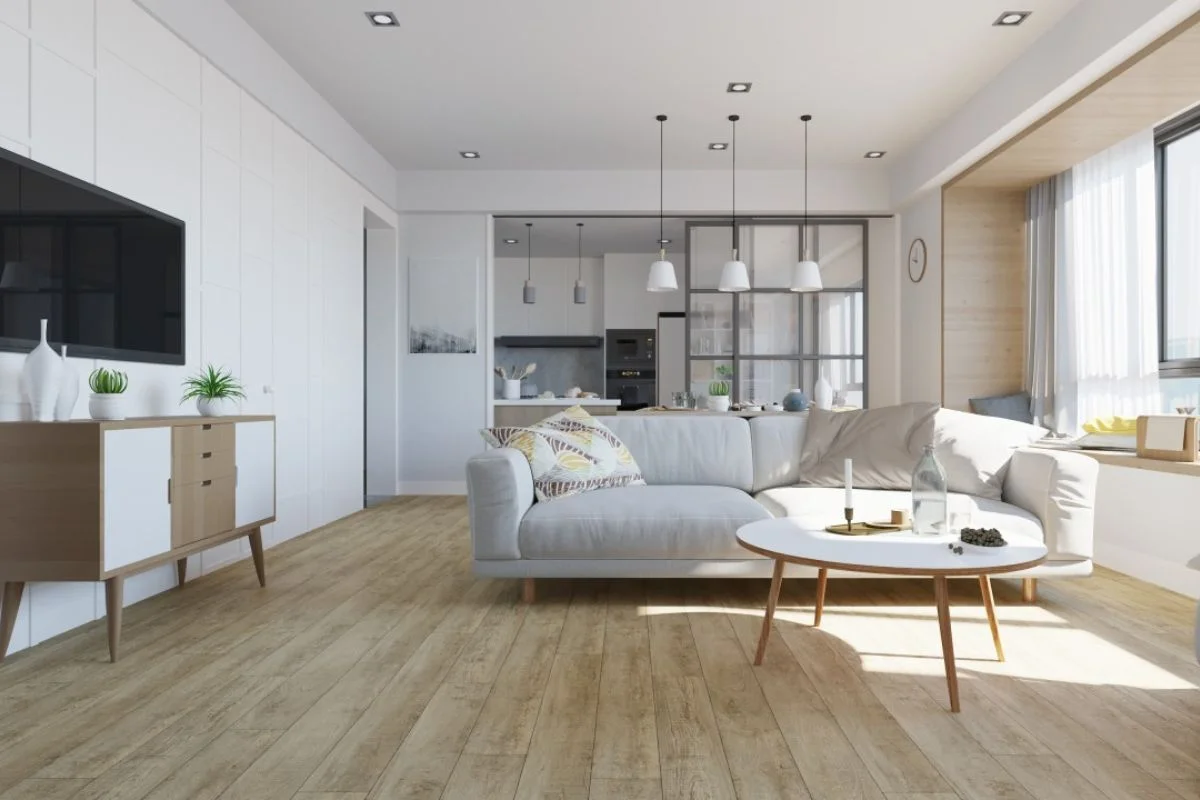Sustainable Style: The Eco-Friendly Benefits of SPC Wood Flooring
In today’s world, sustainability has become a key consideration in every aspect of our lives, including home design and construction. As we strive to reduce our environmental footprint and preserve natural resources, the demand for eco-friendly building materials continues to grow. One such material that has gained prominence in the realm of flooring is SPC (Stone Plastic Composite) wood flooring.
In this exploration of sustainable style, we delve into the eco-friendly benefits of SPC wood flooring. Unlike traditional hardwood flooring, which often involves the depletion of forests and extensive processing, SPC wood flooring offers a more environmentally conscious alternative without compromising on style or durability.
Join us as we uncover the unique characteristics of SPC wood flooring that make it a sustainable choice for eco-conscious homeowners and designers. From its renewable composition to its energy-efficient manufacturing process, SPC wood flooring represents a harmonious blend of beauty and sustainability, paving the way for a greener future in interior design.
Importance SPC Wood Flooring in Modern Interior Design
In the ever-evolving landscape of modern interior design, the significance of Stone Plastic Composite (SPC) Wood Flooring has emerged as a pivotal element, reshaping spaces with its unique blend of aesthetics and functionality. As contemporary design trends continue to embrace a harmonious balance between style and practicality, SPC Wood Flooring has become a preferred choice for architects, designers, and homeowners alike.
Authentic Elegance: Embracing Timeless Beauty
- SPC Wood Flooring effortlessly captures the timeless elegance of traditional hardwood, offering a warm and inviting ambiance that resonates with classic design sensibilities. Its ability to replicate the natural grains and textures of wood provides spaces with an authentic, sophisticated charm, creating an atmosphere of enduring beauty.
Versatility in Design: Adaptable to Various Aesthetics
- One of the key reasons for the growing importance of SPC Wood Flooring lies in its versatility. Whether it’s a minimalist, Scandinavian, or eclectic design theme, SPC flooring seamlessly integrates with diverse interior styles. The availability of a wide range of colours, finishes, and patterns allows designers to explore creative possibilities, making it a versatile canvas for expressing individual tastes and preferences.
Durability and Resilience: Practicality Meets Style
- In the fast-paced world of modern living, durability is non-negotiable. SPC Wood Flooring excels in this aspect, standing out as a resilient solution that can withstand the challenges of daily life. Its composition, featuring a stone-plastic core, makes it highly resistant to impacts, scratches, and moisture, ensuring longevity without compromising on style.
Ease of Maintenance: A Practical Choice for Busy Lifestyles
- Modern interior design necessitates practicality, and SPC Wood Flooring delivers on this front. Unlike traditional hardwood, SPC flooring requires minimal maintenance. Its water-resistant properties make it easy to clean, and its resilience against stains simplifies day-to-day upkeep, making it an ideal choice for individuals with hectic schedules.
Environmental Considerations: A Sustainable Choice
- As sustainability becomes a central focus in contemporary design, SPC Wood Flooring shines as an eco-friendly alternative. With its use of recycled materials and minimal environmental impact during production, it aligns with the growing demand for responsible and sustainable design choices.
Adaptability to Modern Lifestyles: Practical and Stylish Living
- The fluidity of modern lifestyles demands interiors that are not only aesthetically pleasing but also adaptable to the needs of the occupants. SPC Wood Flooring seamlessly fits into this narrative, providing a foundation that accommodates the demands of contemporary living while enhancing the overall visual appeal of a space.
Advantages and Disadvantages of SPC Wood Flooring
Durability:
SPC Wood Flooring is highly durable, thanks to its stone-plastic composite core. It can withstand heavy foot traffic, resist impacts, and is less prone to scratches and dents compared to traditional hardwood.
Water Resistance:
Unlike many other flooring options, SPC is inherently water-resistant. This feature makes it an excellent choice for areas prone to moisture, such as kitchens, bathrooms, and basements.
Authentic Wood Look:
SPC flooring convincingly replicates the natural appearance of wood. The high-resolution photographic layer captures the intricate details of wood grains, providing an authentic and aesthetic appeal.
Easy Installation:
SPC flooring often comes with a click-lock installation system, making it relatively easy for both professionals and DIY enthusiasts to install. This can lead to cost savings on installation.
Low Maintenance:
The water-resistant nature of SPC flooring simplifies cleaning. Regular sweeping and occasional damp mopping are usually sufficient to keep it in pristine condition. It is also resistant to stains, reducing the need for extensive maintenance
Comfort Underfoot:
SPC flooring offers a comfortable surface to walk on, and its dense core provides some insulation against temperature changes. This makes it a pleasant choice for residential and commercial spaces.
Wide Range of Styles:
SPC Wood Flooring is available in a diverse range of styles, colours, and finishes. This versatility allows homeowners and designers to choose options that complement various interior design themes.
Cost-Effective Alternative:
Compared to traditional hardwood, SPC Wood Flooring is often more cost-effective. It provides a similar aesthetic without the high price tag, making it an attractive option for budget-conscious consumers.
Disadvantages of SPC Wood Flooring:
Not as Authentic as Hardwood:
While SPC convincingly mimics the look of wood, some purists may argue that it lacks the genuine feel and character of real hardwood.
Limited Refinishing Options:
SPC flooring cannot be refinished like traditional hardwood. If it experiences significant damage, the only solution may be to replace the affected planks.
Environmental Concerns:
Although SPC flooring can be eco-friendly, depending on the manufacturer, some products may use materials that raise environmental concerns. Consumers should research the sourcing and production practices of specific brands.
Vulnerability to Sharp Objects:
While SPC is resistant to many types of damage, sharp objects or heavy furniture dragged across the surface may cause scratches. It’s advisable to use furniture pads or take precautions to prevent such incidents.
Potential for Fading in Sunlight:
Prolonged exposure to direct sunlight can cause fading in SPC flooring. This is a consideration for spaces with large windows or areas that receive substantial sunlight.
Installation Challenges on Uneven Subfloors:
SPC flooring requires a level and smooth subfloor for optimal installation. Uneven surfaces may result in an unsatisfactory outcome, emphasising the importance of proper subfloor preparation.
Limited Repair Options:
Unlike hardwood, where individual planks can be replaced or refinished, damaged SPC planks may need to be entirely replaced. This can be more challenging and potentially incur higher costs.
Installation Guide for SPC Wood Flooring
Installing Stone Plastic Composite (SPC) wood flooring is a rewarding project that can transform the look and feel of your space. Whether you’re a seasoned DIY enthusiast or relying on professional installation, following these step-by-step guidelines will ensure a smooth and successful process.
Pre-installation Preparation:
Acclimate the Flooring:
Before installation, allow the SPC wood flooring to acclimate to the room’s temperature and humidity for at least 48 hours. This helps prevent expansion or contraction after installation.
Prepare the Subfloor:
Ensure the subfloor is clean, dry, and level. Remove any debris, bumps, or imperfections. If needed, use a levelling compound to create a smooth surface.
Check for Moisture:
Confirm that the subfloor moisture levels are within the acceptable range. Excessive moisture can damage the flooring over time.
Installation Process:
Underlayment Installation:
Lay down an underlayment if it’s not pre-attached to the SPC planks. Underlayment helps with sound absorption and provides a slight cushioning effect.
Start with a Straight Line:
Begin the installation in a corner of the room, placing the planks parallel to the longest wall. Use spacers to maintain a consistent expansion gap along the edges of the room.
Interlock the Planks:
SPC flooring typically features a click-lock or interlocking system. Install the planks by angling the tongue of one plank into the groove of the previous plank and pressing down. Use a tapping block and rubber mallet to ensure a snug fit
Stagger the Joints:
Stagger the end joints of the planks in a random pattern to create a more natural look and enhance the stability of the floor.
Cutting Planks:
Use a circular saw, jigsaw, or handsaw to cut planks as needed, ensuring a tight fit against walls or obstructions. Remember to leave an expansion gap at all edges.
Around Door Frames:
When encountering door frames, use a handsaw or jigsaw to cut the planks to fit around the frame, allowing for expansion.
Finishing Touches:
Install Transition Strips:
Install transition strips in doorways or between different flooring materials to create a seamless transition and enhance the floor’s stability.
Trimming and Molding:
Install baseboards and quarter-round moulding to cover the expansion gap and create a finished look. Attach these mouldings to the walls, not the flooring, to allow for expansion and contraction.
Post-installation Care:
Clean the Floor:
After installation, thoroughly clean the floor to remove any dust or debris. Use a manufacturer-recommended cleaner suitable for SPC flooring.
Enjoy Your New Floor:
Once the cleaning is complete, you can immediately enjoy your newly installed SPC wood flooring. Regular maintenance, such as routine sweeping and occasional damp mopping, will keep it looking pristine.
Maintaining the Beauty: Care Tips for SPC Wood Flooring
Maintaining the beauty of your Stone Plastic Composite (SPC) wood flooring is not only about preserving its visual appeal but also ensuring its longevity and resilience. Here’s a comprehensive guide to caring for your SPC flooring, keeping it looking pristine for years to come.
Daily Cleaning Routine:
Sweep or Vacuum Regularly:
- Dust and debris can accumulate on the surface, leading to potential scratches. Regular sweeping or vacuuming with a soft-bristle attachment will help keep the floor clean.
Use a Soft Broom:
- Opt for a soft-bristle broom to avoid scratching the surface. Microfiber dust mops are also effective in capturing fine particles without causing damage.
Dealing with Spills and Stains:
Clean Spills Immediately:
- SPC flooring is water-resistant, but it’s crucial to clean up spills promptly to prevent any potential damage. Use a damp cloth or mop for quick and efficient cleaning.
Mild Cleaning Solutions:
- For tougher stains, use a pH-neutral, vinyl-safe cleaner recommended by the flooring manufacturer. Avoid harsh chemicals or abrasive cleaners that can compromise the floor’s finish.
Protection Against Scratches:
Furniture Pads:
- Place furniture pads under heavy furniture to prevent scratches and indentations when moving or rearranging items.
Avoid High Heels and Sharp Objects:
- High heels and sharp objects can cause scratches. Encourage household members and guests to remove high heels or use protective pads. Be cautious when moving heavy objects to avoid dragging them across the floor.
Long-Term Maintenance Strategies:
Protect Against Sunlight Fading:
- Use curtains or blinds to limit direct sunlight exposure, as prolonged exposure can cause fading over time.
Rearrange Furniture Periodically:
- To ensure even wear, rearrange furniture periodically. This helps distribute foot traffic and sunlight exposure more evenly across the floor.
Special Care for Commercial Spaces:
Use Entry Mats:
- Place entry mats at entrances to minimise the tracking of dirt and grit onto the SPC flooring in commercial spaces.
Regular Maintenance Schedule:
- Implement a regular maintenance schedule, especially in high-traffic areas. This may include more frequent cleaning and inspection for signs of wear.
Additional Tips:
Avoid Steam Cleaners:
- While SPC flooring is water-resistant, avoid using steam cleaners. The heat and moisture generated by steam cleaners can potentially damage the flooring.
Follow Manufacturer Guidelines:
- Always refer to the manufacturer’s care and maintenance guidelines for specific recommendations tailored to your SPC flooring product.
Address Issues Promptly:
- If you notice any issues such as loose planks or damaged areas, address them promptly to prevent further damage and maintain the overall integrity of the flooring
Conclusion
In conclusion, Stone Plastic Composite (SPC) Wood Flooring emerges not only as a design choice but as a resilient and sophisticated solution that seamlessly combines form and function. Its ability to replicate the timeless beauty of traditional hardwood while offering unparalleled durability has positioned it at the forefront of modern interior design.





0 comments